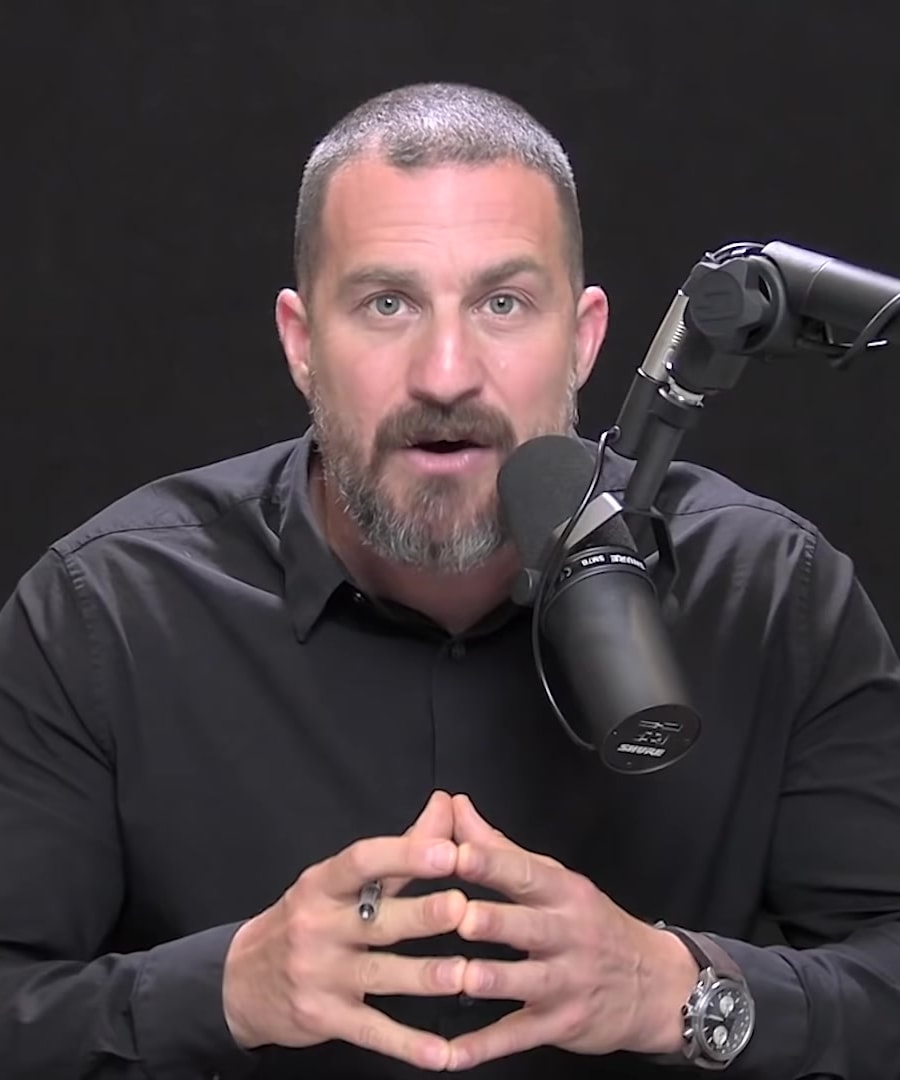how to lose 20 lbs in 12 weeks
Sources:
To lose 20 lbs in 12 weeks, you could follow a structured plan focusing on diet modification, regular exercise, and maintaining a calorie deficit. Here are some insights and recommendations from Andrew Huberman:
-
12-Week Time Frame: A duration of 12 weeks is adequate for implementing new health regiments and seeing noticeable changes in body adaptation, as discussed with Duncan French. This period allows you to evaluate how well specific strategies are working for you 1.
-
Dietary Changes: Consider time-restricted eating, such as limiting your eating window to 8-10 hours per day. Studies have shown that this approach can aid in weight loss and improve overall health 2.
-
Exercise Regimen: Incorporate a balanced exercise program that includes both strength and cardiovascular training. Aim for about 60 minutes of exercise per day, five days a week, to optimize cardiovascular and brain health without overextending cortisol levels. Adjust the intensity and duration based on your fitness level and responses 3.
-
Efficient Training Plans: Andrew Huberman discusses the benefits of planning your training in cycles, suggesting a structured approach with periods of increased intensity followed by recovery times. This method helps prevent overuse injuries and maintains motivation 4.
-
Monitoring and Adjusting: Regularly track your progress and adjust your diet and exercise plans as needed to ensure you are on track to meet your weight loss goal. The use of apps or journals to record food intake, exercise, and body weight can be very helpful 5.
-
Consultation with Health Professionals: Always consider consulting with health and fitness professionals to tailor the diet and exercise plans according to your specific health conditions and goals.
This comprehensive approach, combining structured exercise, dietary adjustments, and regular monitoring, should help you achieve your goal of losing 20 lbs over 12 weeks. Adjustments may be necessary based on your body's response to the regimen.
RELATED QUESTIONS-
Can you suggest a detailed exercise plan for weight loss?
While I don't have a detailed exercise plan specifically mentioned by Andrew Huberman, I can suggest a general regimen based on his discussions about effective exercise strategies for health and weight management:
Weekly Exercise Plan for Weight Loss:
1. Cardiovascular Exercise:
- Frequency: 4-5 times a week.
- Duration: 30-60 minutes.
- Type: Choose between running, brisk walking, cycling, swimming, or rowing. Incorporate interval training once or twice a week where you alternate between high and low intensity.
2. Strength Training:
- Frequency: 2-3 times a week on non-consecutive days.
- Duration: 30-45 minutes.
- Type: Focus on major muscle groups using free weights, weight machines, or body-weight exercises. Incorporate exercises like squats, deadlifts, bench presses, and pull-ups.
3. Flexibility and Balance:
- Frequency: 2-3 times a week.
- Duration: 20-30 minutes.
- Type: Yoga or Pilates sessions, which also contribute to muscle toning and mental relaxation.
4. Active Recovery:
- Frequency: 1-2 times a week.
- Activities: Light walking, gentle stretching, or recreational activities that keep you moving but allow for recovery.
Tips for Maximizing Results:
- Consistency is Key: Adherence to a regular exercise schedule is crucial for sustainable weight loss.
- Monitor Intensity: Use heart rate zones to ensure you're working at the right intensity for fat loss. Typically, this is 50-70% of your maximum heart rate during moderate cardio sessions.
- Progressive Overload: Gradually increase the intensity or volume of your workouts to continue making progress.
Monitoring and Adjustments:
Regularly assess your progress and adjust your exercise plan as needed to continue losing weight and improving your fitness. This might mean increasing the intensity of your workouts or mixing in different types of exercise to keep your routine exciting and effective.
Implementing this plan should help you achieve weight loss in a healthy, sustainable way. Always consult with a fitness professional to tailor the plan further to your individual needs and goals.
RELATED QUESTIONSwhat would be specific examples of those activities
Here are some specific examples of exercises you can incorporate into each category of the exercise plan I suggested for weight loss:
Cardiovascular Exercises:
- Running: Start with a warm-up walk, then run at a moderate pace. For interval training, alternate between 1 minute of sprinting and 2 minutes of walking or jogging.
- Cycling: Use a stationary bike or go for a bike ride outdoors. Include hills or increase the resistance for added intensity.
- Swimming: Alternate between different strokes (freestyle, breaststroke) to keep the workout engaging and challenging.
Strength Training Exercises:
- Upper Body: Push-ups, bench press, dumbbell rows, and bicep curls.
- Lower Body: Squats, lunges, deadlifts, and leg presses.
- Core: Planks, Russian twists, and leg raises.
Flexibility and Balance:
- Yoga: Incorporate poses like downward dog, warrior, and tree pose to improve flexibility and balance.
- Pilates: Exercises like the hundred, roll-ups, and leg circles can strengthen your core and improve your overall body control.
Active Recovery:
- Light Walking: A gentle 30-minute walk in a park or around your neighborhood.
- Gentle Stretching: Focus on major muscle groups and stretches that you find particularly soothing.
Each of these exercises targets different aspects of fitness and contributes to overall weight loss when combined with a consistent routine and proper nutrition. Adjust the intensity and duration to match your current fitness level and desired goals.
RELATED QUESTIONSShow me more cardio workouts for weight loss.
Sources:
Here are some additional cardio workouts that are effective for weight loss, as discussed by experts on the :
-
High-Intensity Interval Training (HIIT)
- Engage in intense bursts of exercise followed by periods of lower intensity or rest. This could include activities like sprinting for 1 minute followed by 2 minutes of walking, repeated several times.
- HIIT is beneficial for burning a significant amount of calories in a short period and can increase metabolic rate even after the workout is finished 1.
-
Outdoor Activities
- Incorporate activities like hill sprints or cycling in varied terrains. These not only provide the cardiovascular benefits but also expose you to different environmental conditions which can enhance the workout intensity.
- Outdoor activities can simulate interval training naturally, as terrain and conditions change 2.
-
Structured Cardio Programs
- Transition into structured cardio programs especially towards the end of the year, focusing on pure cardiovascular fitness. This might include using cardio machines like a Stairmaster, an assault bike, or participating in classes like kickboxing or jiu-jitsu 2.
-
Mindset and Perception
- Recognize and mentally register your activity as beneficial exercise. A study discussed in the podcast showed that simply altering the mindset about daily physical activities (viewing them as beneficial exercise) led to health improvements like weight loss and reduced blood pressure, without changing the physical activity itself 3.
These varying forms of cardio workouts not only help in burning calories but also in enhancing overall cardiovascular health, and the perception of these activities can further amplify their benefits.
RELATED QUESTIONS-







